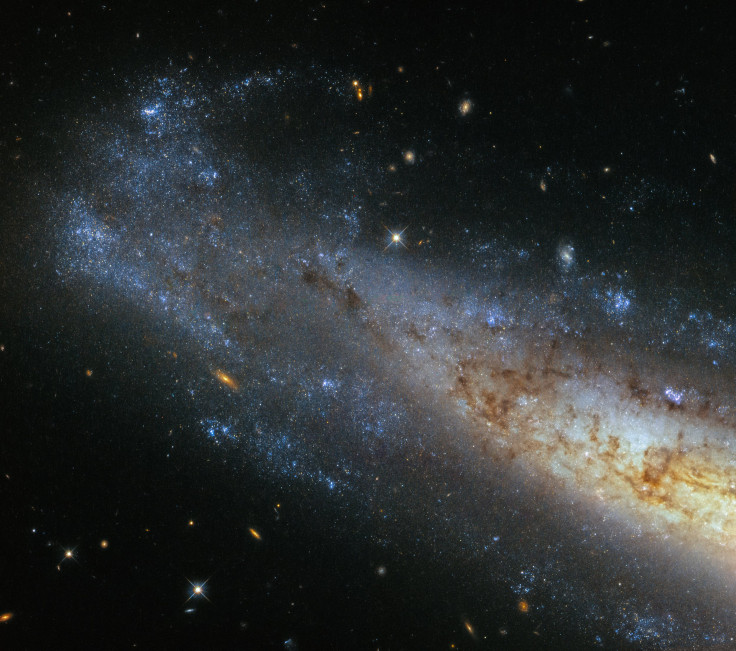Hubble Snaps New Image Of Spiral Galaxy NGC 1448

Nearly 50 million light-years from Earth, in the faint constellation of Horologium (also known as the Pendulum Clock), lies a spiral galaxy named NGC 1448. On Monday, NASA and the European Space Agency (ESA) released an image of a section of the galaxy — one that shows it from a unique vantage point — captured using the Hubble Space Telescope.
In the image, because of its orientation vis-à-vis Earth, the galaxy appears more oval than circular, and its spirals are not immediately evident.
“Imagine a spiral galaxy as a circular frisbee spinning gently in space. When we see it face on, our observations reveal a spectacular amount of detail and structure,” ESA explained in a statement accompanying the image. “However, the NGC 1448 frisbee is very nearly edge-on with respect to Earth. … The spiral arms, which curve out from NGC 1448’s dense core, can just about be seen.”
This is far from the only spiral galaxy that has been captured by Hubble. Most recently, the telescope was used to snap a stunning image of the barred spiral galaxy NGC 7640. The shape of the galaxy, located over 19 million light-years from Earth in the Andromeda constellation, is similar to that of the Milky Way, but its diameter is just over half that of our home galaxy.
“The stars in these dramatic spiral configurations are constantly moving as they orbit around the galaxy’s core, with those on the inside making the orbit faster than those sitting further out,” the ESA said in the statement. “This makes the formation and continued existence of a spiral galaxy’s arms something of a cosmic puzzle, because the arms wrapped around the spinning core should become wound tighter and tighter as time goes on — but this is not what we see. This is known as the winding problem.”
In order to solve this problem, scientists invoke what’s known as the density wave theory, in which the movement of the spiral arms is seen as different from the movement of actual matter (stars, gas, dust and planets) in them.
The Hubble Space Telescope was launched aboard NASA’s space shuttle Discovery on April 24, 1990. Since then, it has not only captured photos of an unimaginable number of truly spectacular nebulae and galaxies, it has also peered back over 13 billion years to look at our cosmos in its infancy, giving us, as NASA aptly put in an earlier statement, “a front row seat to the awe inspiring universe we live in.
© Copyright IBTimes 2025. All rights reserved.





















